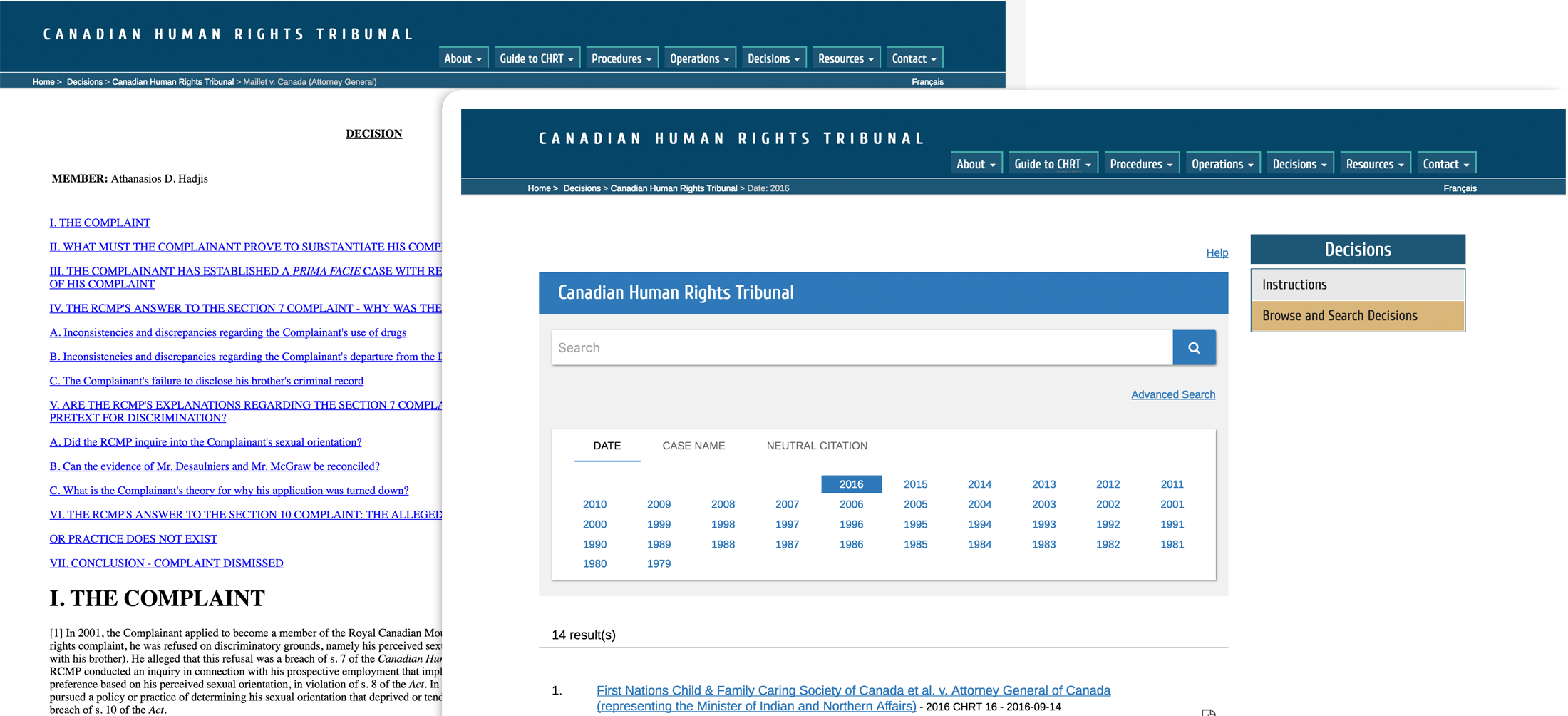Lexum improved the accessibility of 1,500 decisions rendered by the Canadian Human Rights Tribunal (CHRT) by making them compliant with the Government of Canada Standard on Web Accessibility.
The Challenge
The Canadian Human Rights Tribunal (CHRT) is a special administrative tribunal which upholds the principles of the Canadian Human Rights Act to protect individuals from discrimination. The cases heard by the CHRT are referred by the Canadian Human Rights Commission (CHRC). The CHRT’s jurisdiction covers matters that come within the legislative authority of the Parliament of Canada, including those concerning federal government departments and agencies, as well as banks, airlines and other federally regulated employers and providers of goods, services, facilities and accommodation.
The CHRT required approximately 750 of its bilingual decisions and / or rulings to be de-archived. Those decisions were rendered by the Canadian Human Rights Tribunal between 1979 and 2010. In total Lexum was mandated to make 1,500 historical decisions compliant with the Standard on Web Accessibility and the Standard on Web Usability issued by the Treasury Board Secretariat of the Government of Canada.
The Solution
Lexum completed the project in five steps: establishment of a work plan, extraction of files, improving accessibility of files, validating & reporting, and re-publishing.
The detailed work plan outlined the project’s specifications, requirements and process, including the general timeline and deliverables. The second step consisted of extracting the relevant files from Decisia, and storing them on a file system for processing. All decisions were assigned a unique file number designed to ease re-publishing at the end of the project.
The core task consisted of improving the accessibility of the HTML files. They were individually processed in order to make them compliant with the Standard on Web Accessibility and the Standard on Web Usability of the Government of Canada. All relevant HTML tags were modified accordingly, such as the document encoding and language specifications or the character attributes and image alternative text. The title of the document is always formatted so that the case name is followed by the name of the tribunal. The titles and subtitles follow a logical scheme and hierarchy using H1, H2 and the ordered list attributes. All paragraphs, quotations, tables, signatures, footnotes and appendices follow the strict WCAG 2.0 Level AA methodology such that the content is more easily accessible and readable by people with disabilities.
Once processed, all files were submitted to the reporting tool required by the Treasury Board Secretariat in order to validate their compliance with the standards. Some final adjustments were made in order to resolve minor remaining issues.
Finally all files were re-published on Decisia and made available on the CHRT website. Decisions were batch-processed in accordance with their unique file number. The previously non-compliant HTML files were simply overwritten with the newly produced files.
